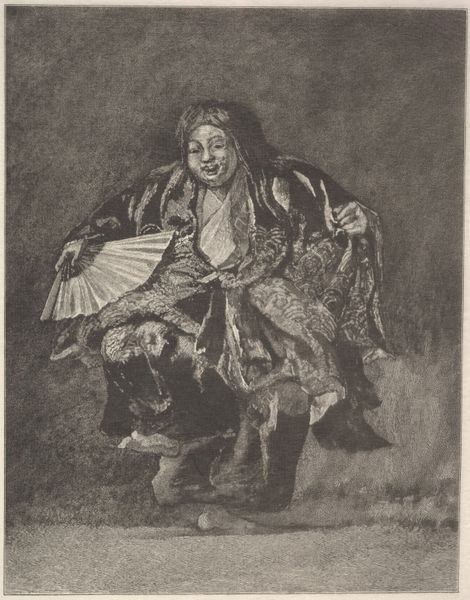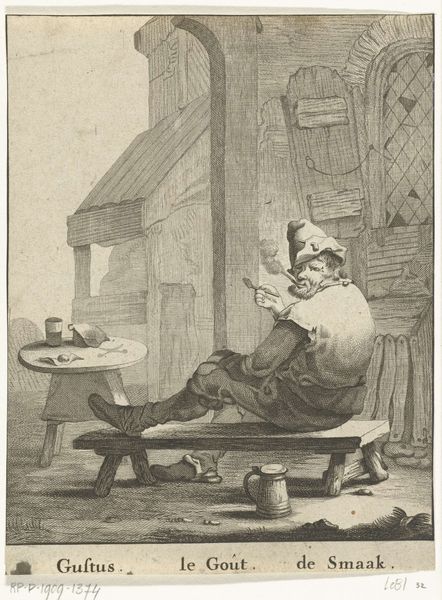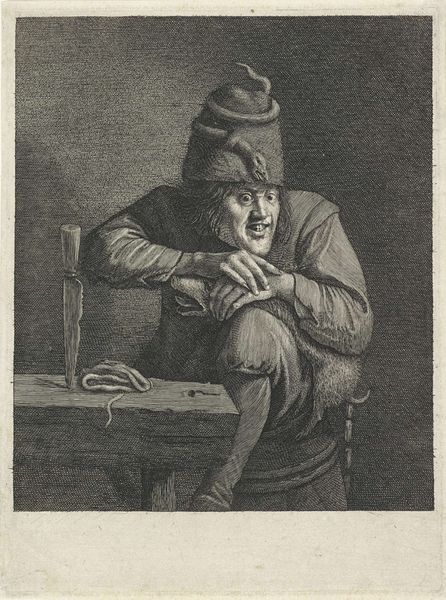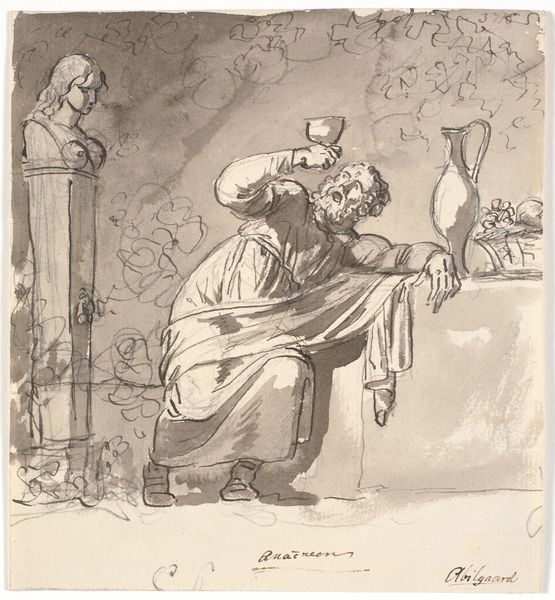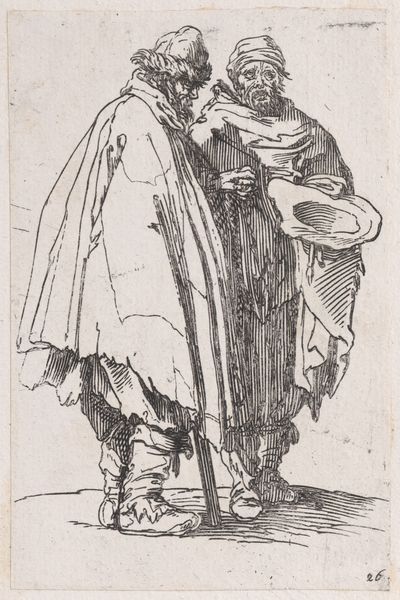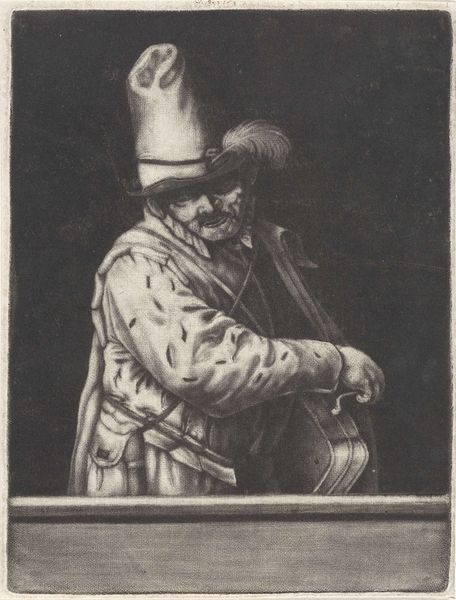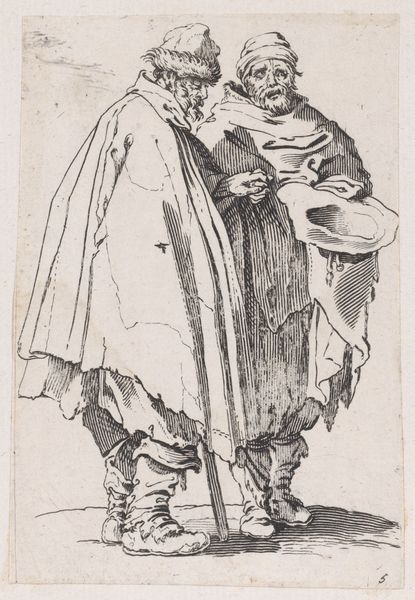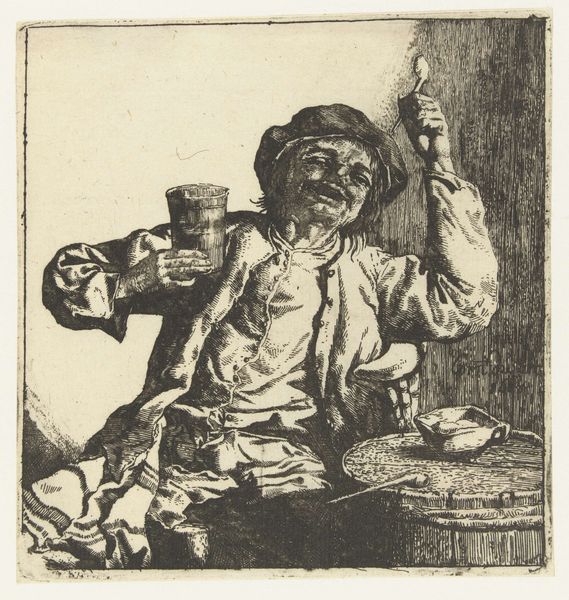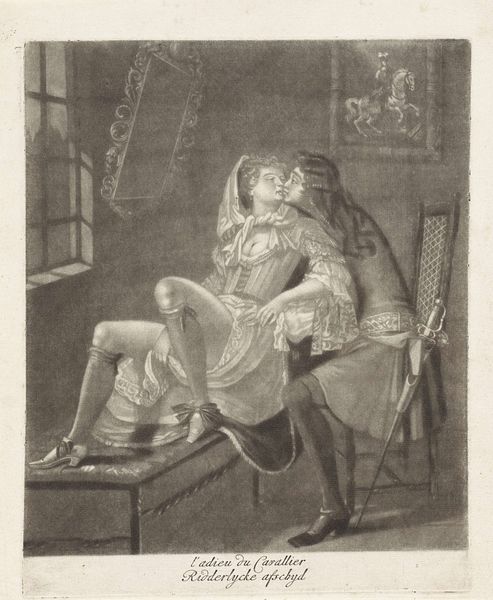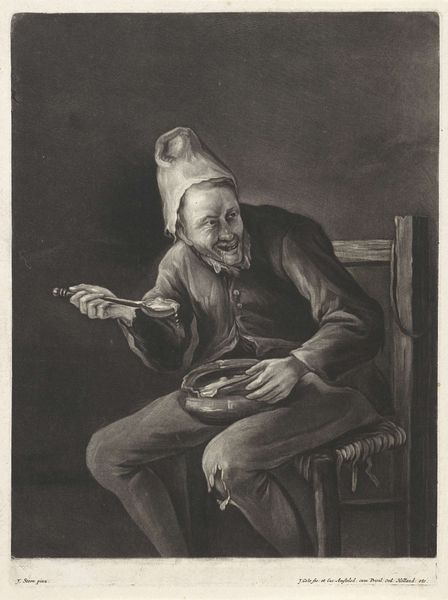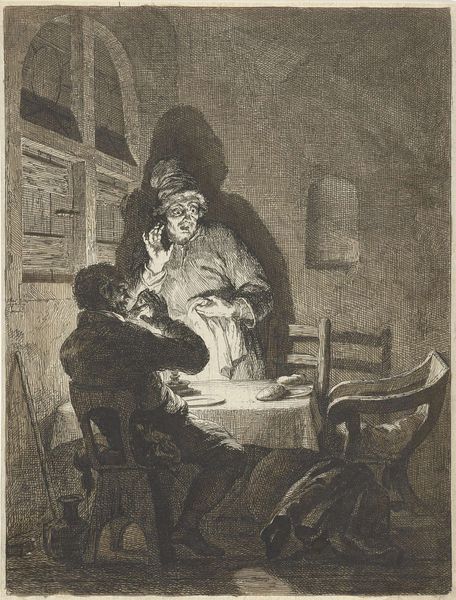
oil-paint, impasto
#
portrait
#
oil-paint
#
painted
#
figuration
#
oil painting
#
impasto
#
male-portraits
#
genre-painting
#
realism
Dimensions: 46.99 x 33.02 cm
Copyright: Public domain
Curator: Ah, "The King's Jester" by William Merritt Chase. It was painted in 1875. Editor: First impression? Mirthless. The jester looks as though he’s utterly bored, almost…resigned. It's like a portrait of existential ennui, costumed in motley. Curator: Right. Let's unpack this from a historical standpoint. Genre painting like this emerged with the rising middle class in Europe, fueled by new notions of individualism. Jesters, historically, were figures of subversion but also completely dependent on the structures of power they mocked. Editor: That contradiction is juicy! You feel it in his eyes, or what you can glimpse of them, half-lidded. The pose too - cross-legged, on the floor amid art supplies; he's an artist playing the role of a jester or perhaps, vice versa. The artist sees themself trapped in a theatrical farce. Curator: Consider the painting's technique. Chase, adopting elements of Realism and using visible brushstrokes, highlights the textures of the costume and props. It avoids romanticizing its subject. How does that inform our understanding? Editor: It makes me think of the clown as a person – less caricature, more character study. Like a peek behind the curtain, not just at the clown, but the whole system. Look how the paint seems piled on his collar like frosting gone wrong. Curator: Certainly. And while on the one hand the painting appears to grant individuality to this man in costume, that costume also highlights how identities are always mediated through imposed narratives, expectations… Editor: Yep! What mask do we wear, right? Are we *all* just jesters in some cosmic court, fumbling with our instruments? The mood of this piece hits on something universal about playing roles, about being watched, and that peculiar emptiness behind forced smiles. The painting suggests the tools needed for that role – paint, costume – exist as clutter on the floor surrounding him. Curator: Well put! It captures a very modern dilemma of negotiating performance and authenticity, visibility, and invisibility. A pertinent conversation to be having still, I think. Editor: Absolutely! Thanks for sharing that with me.
Comments
No comments
Be the first to comment and join the conversation on the ultimate creative platform.

